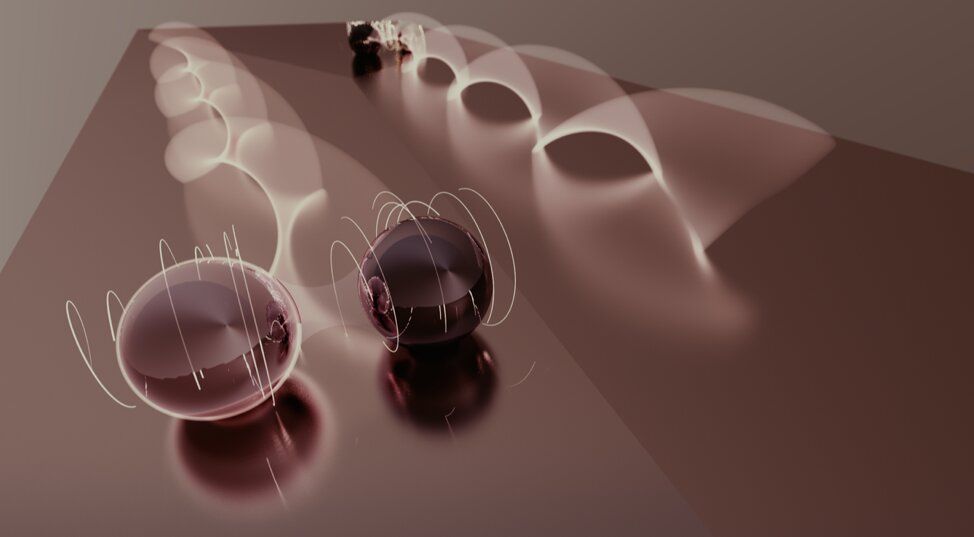Particle chasing—it’s a game that so many physicists play. Sometimes the hunt takes place inside large supercolliders, where spectacular collisions are necessary to find hidden particles and new physics. For physicists studying solids, the game occurs in a much different environment and the sought-after particles don’t come from furious collisions. Instead, particle-like entities, called quasiparticles, emerge from complicated electronic interactions that happen deep within a material. Sometimes the quasiparticles are easy to probe, but others are more difficult to spot, lurking just out of reach.
New measurements show evidence for the presence of exotic Majorana particles on the surface of an unconventional superconductor, Uranium ditelluride. Graphic provided by Dr. E. Edwards, Managing Director of Illinois Quantum Information Science and Technology Center (IQUIST).
Now a team of researchers at the University of Illinois, led by physicist Vidya Madhavan, in collaboration with researchers from the National Institute of Standards and Technology, the University of Maryland, Boston College, and ETH Zurich, have used high-resolution microscopy tools to peer at the inner-workings of an unusual type of superconductor, uranium ditelluride (UTe2). Their measurements reveal strong evidence that this material may be a natural home to an exotic quasiparticle that’s been hiding from physicists for decades. The study is published in the March 26 issue of Nature.
